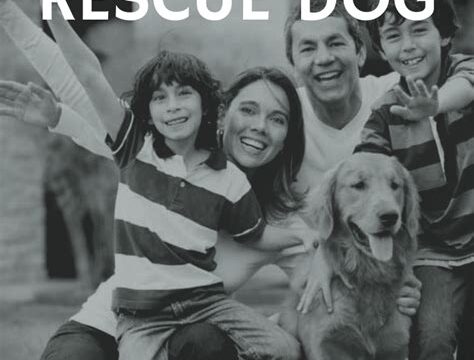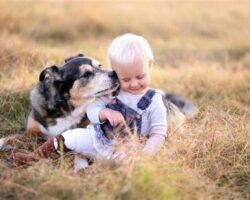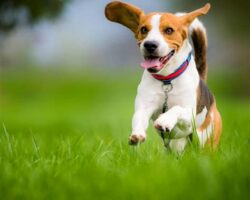Understanding the importance of socializing your dog
The importance of socializing your dog cannot be overstated. Socialization plays a crucial role in shaping your dog’s behavior and ensuring their overall well-being. It involves exposing your dog to various environments, people, and other animals from a young age, and gradually expanding their social experiences as they grow. When done correctly, socialization helps your dog become confident, friendly, and well-adjusted, making them a happy member of both your family and the wider community.
Socializing your dog helps them build a positive association with different situations and reduces the likelihood of fear-based behaviors such as aggression or anxiety. Dogs that are not adequately socialized may develop fear or aggression towards other dogs, people, or unfamiliar environments. This can lead to behavioral issues and make simple activities such as walks in the park or meeting new people a stressful experience.
One effective way to socialize your dog is through positive reinforcement. This involves rewarding your dog’s desired behaviors with praise, treats, or playtime. For example, if your dog remains calm and friendly when meeting a new person, you can reward them with a treat or enthusiastic praise. This positive association helps them understand that interacting with new people or situations is a positive experience.
- Gradually exposing your dog to different environments, sounds, and objects is another important aspect of socialization. Introduce them to busy streets, parks, or cafes, allowing them to experience diverse sights, smells, and sounds.
- Organizing playdates and supervised interactions with other dogs can also greatly contribute to your dog’s social development. It helps them learn appropriate play behaviors, establish boundaries, and understand canine communication.
- If you encounter challenges or notice signs of fear or aggression in your dog, seeking professional help is highly recommended. A professional dog trainer or behaviorist can assess your dog’s behavior, provide tailored advice, and guide you through effective socialization techniques.
| Benefits of Socializing Your Dog | Challenges of Inadequate Socialization |
|---|---|
|
|
Socializing your dog is an ongoing process that requires patience, consistency, and dedication. Start early, expose them to positive experiences, and provide them with the necessary tools to navigate the social world confidently. By investing time and effort into socializing your dog, you are setting them up for a happy and fulfilling life as a well-rounded companion.
Recognizing signs of fear and aggression in dogs
Recognizing signs of fear and aggression in dogs is an essential skill for any dog owner or handler. Dogs, like humans, have complex emotions and can experience fear or aggression in certain situations. Being able to identify these signs is crucial for ensuring the safety of both the dog and those around them.
Fear in dogs can manifest in various ways. Some common signs of fear include trembling, cowering, hiding, excessive panting or drooling, excessive barking or growling, and attempting to escape or run away. When a dog is fearful, they may also exhibit submissive behaviors such as tucking their tail between their legs, flattening their ears against their head, or avoiding eye contact. It is important to note that fear can lead to aggression if the dog feels cornered or threatened.
On the other hand, aggression in dogs is a serious behavior that should not be ignored. Aggression can be directed towards humans, other animals, or even inanimate objects. Some indicators of aggression in dogs include bared teeth, raised hackles, intense staring, snapping or biting, growling or snarling, and lunging or leaping towards the target of their aggression. Aggressive dogs may also have a stiff body posture, with their tail held high and rigid.
Recognizing these signs of fear and aggression is important for several reasons. Firstly, it allows dog owners to take appropriate measures to prevent any potential harm. By identifying the triggers or situations that cause fear or aggression in their dog, owners can proactively manage their environment to minimize reactivity. Additionally, recognizing these signs enables owners to seek professional help if necessary. A qualified dog trainer or behaviorist can provide specialized guidance and develop a behavior modification plan to address fear or aggression issues.
In conclusion, recognizing signs of fear and aggression in dogs is crucial for promoting their well-being and ensuring the safety of others. It is essential for dog owners and handlers to familiarize themselves with the various signs and behaviors associated with fear and aggression. By doing so, they can take the necessary steps to address these issues and provide a safe and supportive environment for their furry companions.
Introducing your dog to new environments and people
Introducing your dog to new environments and people is an essential aspect of their socialization process. Just like humans, dogs need to get accustomed to different surroundings and interact with different individuals to develop a well-rounded personality.
When exposing your dog to new environments, it is important to be mindful of their comfort levels and gradually introduce them to unfamiliar surroundings. Forcing them into a new environment abruptly can lead to anxiety and stress. Start by taking them to quieter places with fewer distractions, allowing them to acclimate to the sights, sounds, and smells at their own pace.
Similarly, introducing your dog to new people requires patience and positive reinforcement. Always ask individuals to approach your dog calmly and gently, giving them the opportunity to sniff and assess the person’s energy. It is crucial to emphasize positive experiences during these introductions, as negative encounters can have lasting effects on your dog’s behavior.
- Use treats or their favorite toy as rewards when they display relaxed and friendly behavior around new people.
- Avoid overwhelming your dog by limiting their exposure to large crowds or noisy environments initially.
- Gradually increase the level of difficulty by introducing your dog to more challenging environments and different types of individuals.
| Environment | People |
|---|---|
| Parks | Friends and family |
| Beaches | Neighbors |
| Outdoor cafes | Strangers in controlled settings |
Remember, the key to introducing your dog to new environments and people is to create positive associations. Provide them with treats, praise, and reassurance to help them feel safe and confident in new situations. By gradually exposing them and using positive reinforcement, you can help your dog become more adaptable and socialize effectively.
Using positive reinforcement to reward desired behavior
Using positive reinforcement to reward desired behavior in dogs is a highly effective training method that focuses on encouraging good behavior rather than punishing bad behavior. This approach is based on the principle that dogs, like humans, respond better to positive reinforcement and rewards rather than aversive techniques.
Positive reinforcement involves rewarding your dog for exhibiting desirable behavior with treats, praise, or any form of reward that your dog finds motivating. This can include verbal cues such as “good dog” or physical affection such as petting or belly rubs. By consistently rewarding the behavior you want to see, you are reinforcing the idea that performing that behavior will lead to pleasant outcomes.
The use of positive reinforcement has numerous benefits in dog training. Firstly, it establishes a strong bond between you and your dog based on trust and clear communication. It creates a positive association with training sessions and encourages your dog to actively participate in the learning process. This can lead to quicker and more successful results.
- Increased motivation: Dogs are motivated to repeat behaviors that are followed by rewards. By using positive reinforcement, you can increase your dog’s motivation to learn and engage in training activities.
- Improved focus and attention: When you reward your dog for desired behaviors, you reinforce their focus and attention on you. This can help in redirecting their attention from distractions and promoting better obedience.
- Enhanced learning: Positive reinforcement stimulates your dog’s cognitive abilities and promotes faster learning. By associating rewards with specific behaviors, your dog can quickly understand what is expected of them.
In addition to using treats and praise, it’s important to choose appropriate rewards based on your dog’s preferences and motivations. Some dogs may be more motivated by playtime with a favorite toy, while others may respond better to a special treat. Understanding what motivates your dog will help you tailor your positive reinforcement techniques to their individual needs.
| Benefits of Using Positive Reinforcement |
|---|
|
It’s important to note that positive reinforcement does not mean ignoring undesirable behavior. Instead of punishing your dog for their mistakes, it is more effective to redirect their behavior towards something more desirable and reward them for making the right choices. Consistency, patience, and clear communication are key for successful positive reinforcement training.
In conclusion, using positive reinforcement to reward desired behavior in dogs is a humane and effective training method. By utilizing rewards, praise, and appropriate motivation, you can build a strong bond with your dog and promote obedience and good behavior. Remember, a positive approach yields positive results!
Gradually exposing your dog to other dogs
Gradually exposing your dog to other dogs is an important part of their socialization process. Dogs are social creatures, and proper socialization can help them develop the skills and confidence needed to interact with other dogs in a positive and appropriate manner. It is crucial to introduce your dog to other dogs in a controlled and gradual manner to ensure their safety and comfort.
One way to gradually expose your dog to other dogs is through controlled introductions. Start by selecting dogs that are known to be friendly and well-behaved. Choose a neutral location, such as a park or a quiet street, where both dogs can feel comfortable. Keep the initial interactions short and positive, allowing the dogs to sniff each other and gauge their reactions. Monitor their body language closely, looking for signs of fear or aggression.
Another important aspect of gradually exposing your dog to other dogs is positive reinforcement. When your dog displays calm and appropriate behavior during these interactions, be sure to reward them with praise, treats, or playtime. This will help reinforce the idea that meeting other dogs is a positive and enjoyable experience. On the other hand, if your dog shows signs of fear or aggression, redirect their attention and remove them from the situation calmly and gently.
In addition to controlled introductions, organizing playdates and supervised interactions can also be beneficial for gradually exposing your dog to other dogs. This allows them to interact with different dogs in a safe and controlled environment. It is important to ensure that both dogs are comfortable and compatible with each other before allowing them to interact off-leash. Always supervise the playdate closely and intervene if any signs of fear, aggression, or inappropriate behavior arise.
When introducing your dog to new environments and people, it is important to be patient and understanding. Each dog is unique and may have different comfort levels when it comes to socialization. Gradually exposing your dog to other dogs can help them build confidence, develop good social skills, and ultimately lead to a well-rounded and well-socialized dog.
Benefits of Gradually Exposing Your Dog to Other Dogs:
– Builds their confidence and social skills
– Helps prevent fear and aggression towards other dogs
– Provides opportunities for positive and enjoyable interactions
Tips for Gradually Exposing Your Dog to Other Dogs:
– Start with controlled introductions in neutral locations
– Use positive reinforcement to reward desired behavior
– Organize playdates and supervised interactions
– Be patient and understanding of your dog’s individual comfort levels
| Signs of Fear in Dogs | Signs of Aggression in Dogs |
|---|---|
| – Cowering or hiding | – Growling or snarling |
| – Trembling or shaking | – Bared teeth |
| – Tail tucking | – Lunging or snapping |
| – Excessive panting or drooling | – Stiff body posture |
| – Pinned-back ears | – Intense staring |
Organizing playdates and supervised interactions
In order to ensure the overall well-being and happiness of your furry companion, it is crucial to understand the significance of socialization. One of the most effective ways to facilitate this process is by organizing playdates and supervised interactions for your dog. These opportunities not only encourage positive social behavior but also provide important mental and physical stimulation for your canine friend.
When it comes to organizing playdates and supervised interactions, it is important to carefully select suitable playmates for your dog. Dogs have different temperaments and energy levels, so it’s crucial to find dogs that are a good match. This will help prevent any potential conflicts or aggression during the playtime. It’s also important to ensure that the dogs have had the necessary vaccinations and are healthy to avoid the spread of illnesses.
During the playdate, it’s essential to closely monitor the interactions between the dogs. Stay alert for any signs of aggression, fear, or discomfort. This could include growling, snapping, or cowering. If you notice any signs of distress, it’s important to intervene and separate the dogs immediately. This will help prevent any potential conflicts and ensure the safety of all involved.
Creating a safe and controlled environment for the playdates is crucial. Make sure the area is securely fenced to prevent any escapes and ensure the dogs cannot wander off and get lost. It’s also a good idea to have plenty of water available to keep the dogs hydrated during their playtime. Additionally, providing some toys and interactive games can help keep the dogs engaged and entertained during their interactions.
In conclusion, organizing playdates and supervised interactions is an important aspect of dog socialization. It provides opportunities for your dog to learn appropriate social behaviors and helps prevent behavioral issues such as fear or aggression. By carefully selecting suitable playmates, closely monitoring the interactions, and creating a safe environment, you can ensure that your dog has positive and enriching social experiences.
- Socialization
- Playdates
- Supervised interactions
- Positive social behavior
- Mental and physical stimulation
- Temperament
- Energy levels
- Vaccinations
- Illness prevention
- Avoiding conflicts
- Signs of aggression
- Signs of fear
- Creating a safe environment
- Water availability
- Engaging toys and games
- Behavioral issues
| Keywords | Explanation |
|---|---|
| Socialization | The process of teaching dogs appropriate behavior and interactions with other animals and humans. |
| Playdates | Scheduled sessions where dogs can interact and play with each other under supervision. |
| Supervised interactions | Ensuring that an adult is present to closely observe and manage the interactions between dogs. |
| Positive social behavior | Behaviors such as appropriate greetings, sharing resources, and playing without aggression or fear. |
| Mental and physical stimulation | Engaging dogs mentally and physically through interactions with other dogs. |
| Temperament | An individual dog’s emotional and behavioral characteristics. |
| Energy levels | The amount of physical activity and exercise a dog requires based on their breed and age. |
| Vaccinations | Administered to protect dogs from common contagious diseases. |
| Illness prevention | Taking measures to avoid the transmission of diseases among dogs. |
| Avoiding conflicts | Taking steps to prevent aggressive or confrontational interactions between dogs. |
| Signs of aggression | Behaviors such as growling, barking, or biting that indicate a dog may be aggressive. |
| Signs of fear | Behaviors such as shaking, trembling, or hiding that indicate a dog may be afraid or anxious. |
| Creating a safe environment | Taking measures to ensure the area where dogs are interacting is secure and free from potential hazards. |
| Water availability | Providing water for dogs to drink during their playtime to keep them hydrated. |
| Engaging toys and games | Toys and interactive activities that keep dogs mentally stimulated and entertained. |
| Behavioral issues | Unwanted or problematic behaviors exhibited by dogs, such as aggression or anxiety. |
Seeking professional help for difficult cases
When it comes to our beloved furry friends, we always strive to provide them with the best care and attention. However, there may come a time when your dog is displaying difficult behavior that you just can’t seem to understand or change. This is where seeking professional help for difficult cases becomes essential.
Professional dog trainers and behaviorists are equipped with the knowledge and expertise to tackle even the most challenging behavior problems. Whether your dog is exhibiting aggression, fear, separation anxiety, or any other behavioral issue, seeking professional help should be your next step.
One of the main advantages of consulting a professional is their ability to analyze the underlying causes of your dog’s behavior. They can help determine if the behavior is rooted in fear, frustration, or any other underlying issue. By understanding the root cause, they can tailor a behavior modification plan specifically for your dog’s needs.
- Expert advice: Seeking professional help guarantees that you receive expert advice from someone who has studied and worked extensively with canine behavior. They understand the subtleties and complexities of dog behavior, which allows them to provide you with accurate guidance.
- Customized approach: Each dog is unique, and what works for one may not work for another. Professional trainers and behaviorists assess your dog’s individual needs and create a customized training plan. They consider your dog’s breed, temperament, and history to ensure the approach is effective.
- Access to resources: Seeking professional help also gives you access to a wide range of resources and tools that can aid in behavior modification. They may recommend specific training equipment, books, or classes that can accelerate your dog’s progress.
It’s important to remember that seeking professional help does not mean you have failed as a dog owner. Dogs, like humans, have unique personalities and experiences that can sometimes lead to challenging behaviors. By reaching out to a professional, you are taking a proactive step towards enhancing your dog’s well-being and happiness.
Frequently Asked Questions
Q: Why is socializing your dog important?
A: Socializing your dog is important because it helps them develop appropriate behavior and communication skills with other dogs and people. It also reduces the risk of fear, anxiety, and aggression in social situations.
Q: How can I recognize signs of fear and aggression in my dog?
A: Signs of fear in dogs include trembling, tail tucking, crouching, and avoidance. Aggression signs may include growling, barking, lunging, and showing teeth. It’s important to understand these signs to prevent any potential harm.
Q: How should I introduce my dog to new environments and people?
A: To introduce your dog to new environments and people, start with calm and controlled interactions. Gradually increase exposure while providing positive reinforcement and rewards for calm behavior. This helps your dog associate new experiences with positive outcomes.
Q: Why is positive reinforcement important in dog training?
A: Positive reinforcement is important because it reinforces and encourages desired behaviors in dogs. Using rewards such as treats, praise, and playtime helps dogs understand what behaviors are expected of them, making training more effective and enjoyable for both the dog and the owner.
Q: How can I gradually expose my dog to other dogs?
A: Gradually exposing your dog to other dogs involves controlled introductions in a neutral environment. Start with parallel walks, then gradually decrease the distance between the dogs. Use positive reinforcement to reward calm and friendly behavior.
Q: How can I organize playdates and supervised interactions for my dog?
A: To organize playdates, find other dog owners who have well-socialized and friendly dogs. Choose safe and enclosed areas for supervised interactions. Monitor the dogs closely and intervene if any signs of fear, aggression, or discomfort are observed.
Q: When should I seek professional help for my dog’s socialization issues?
A: It is recommended to seek professional help if your dog’s socialization issues persist or worsen despite your efforts. A professional dog trainer or behaviorist can assess the situation, provide guidance, and create a customized training plan to address your dog’s specific needs.





